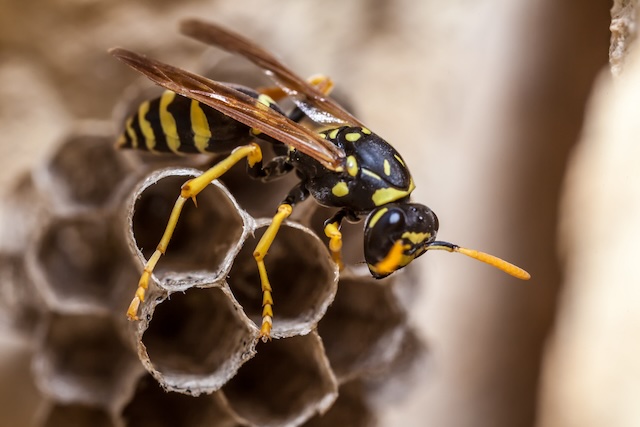Finding a wasp nest close to your home can be scary, especially if you don’t know what kind of wasp it is or what risks it might pose. Identifying wasp nests is an important skill for people to have because it lets them take the right steps. This picture guide is meant to help people recognize the different kinds of wasp nests and understand how important it is to find them early.
1. Paper wasp nests have a unique umbrella shape
Paper wasps build open, umbrella-shaped homes with hexagonal cells that are visible. Usually, the nests are hung from eaves, trees, or other safe places.
Risks: Paper wasps aren’t as mean as some other species, but they can get angry if someone messes with their nest. Being close to the nest makes you more likely to get stung.
2. Yellowjacket nests: tucked away underground or in cracks
Yellowjackets are known for being aggressive, and their nests are usually in underground burrows or other small areas. Their nests are made of something that looks like paper.
Risks: When yellowjackets are protecting their nests, they can be very mean. It can be hard to find underground nests, which makes it more likely that someone will accidentally upset them.
3. Hornet nests: big and high up
Hornets build big nests in the air that look a lot like grey paper mache. You can often find these nests in trees, bushes, or on the outside of buildings.
Hornets are more likely to attack than many other types of wasps. If you disturb a hornet nest, you could get stung multiple times, which could have serious effects.
4. Mud dauber nests: structures made of tubes
What they look like: Mud daubers make mud nests that are circular in shape. Most of the time, these nests are connected to ceilings, walls, or other vertical surfaces.
Mud daubers are not usually mean, so there are some risks. But their homes can look bad, and some species may sting if they feel threatened.
5. Bald-Faced Hornet Nests: Big and Unique
The bald-faced hornet’s nest is big, grey, and shaped like a football. It is connected to trees, bushes, or buildings. The nests look different from each other.
Bald-faced hornets are very protective of their nests and can be mean if they are upset. Their stings can hurt and make you allergic.
Why it’s important to identify people early:
Risk reduction: Finding wasp nests early lets homes figure out the dangers of different species and take the right safety steps.
Preventive Action: When wasp nests are found early, they can be taken care of before they get bigger and harder to control.
Professional Help: If you need to hire professional pest control services, knowing the type of nest and where it is located can help, especially if the species are violent.
How to Find Wasp Nests Without Getting Hurt:
Look from afar: Use glasses to look at nests from a safe distance, so you don’t bother the wasps too much.
Wear Safety Gear: If you need to look more closely, put on safety gear like long sleeves, pants, gloves, and a hood.
Get Professional Help: If you’re not sure what kind of wasp it is or what the best thing to do is, talk to a pest control professional.
Remember that being able to spot a wasp nest is a useful skill that gives people the power to make smart choices about the safety of their property. A safe and comfortable place to live is one where problems are found early and fixed properly.
